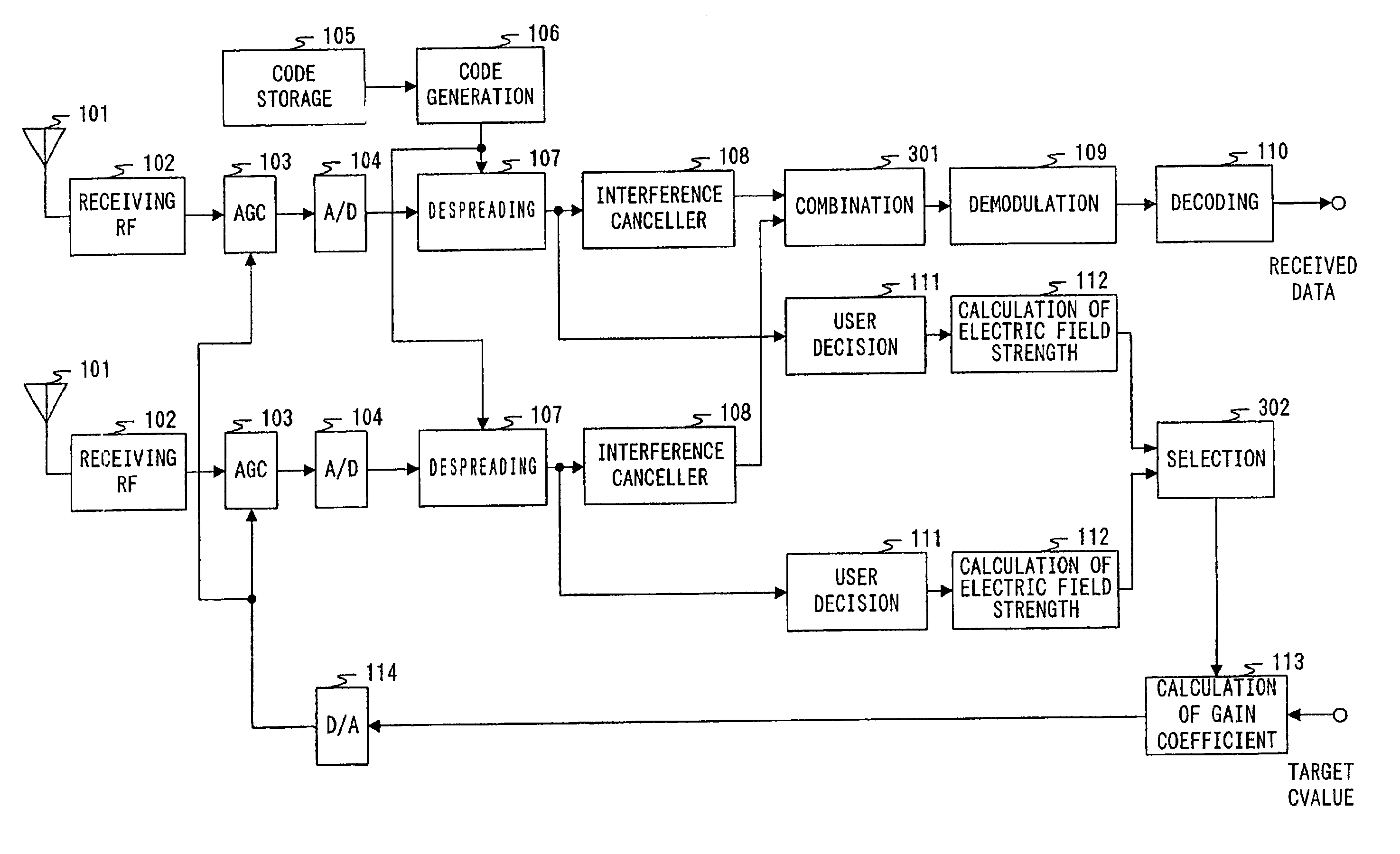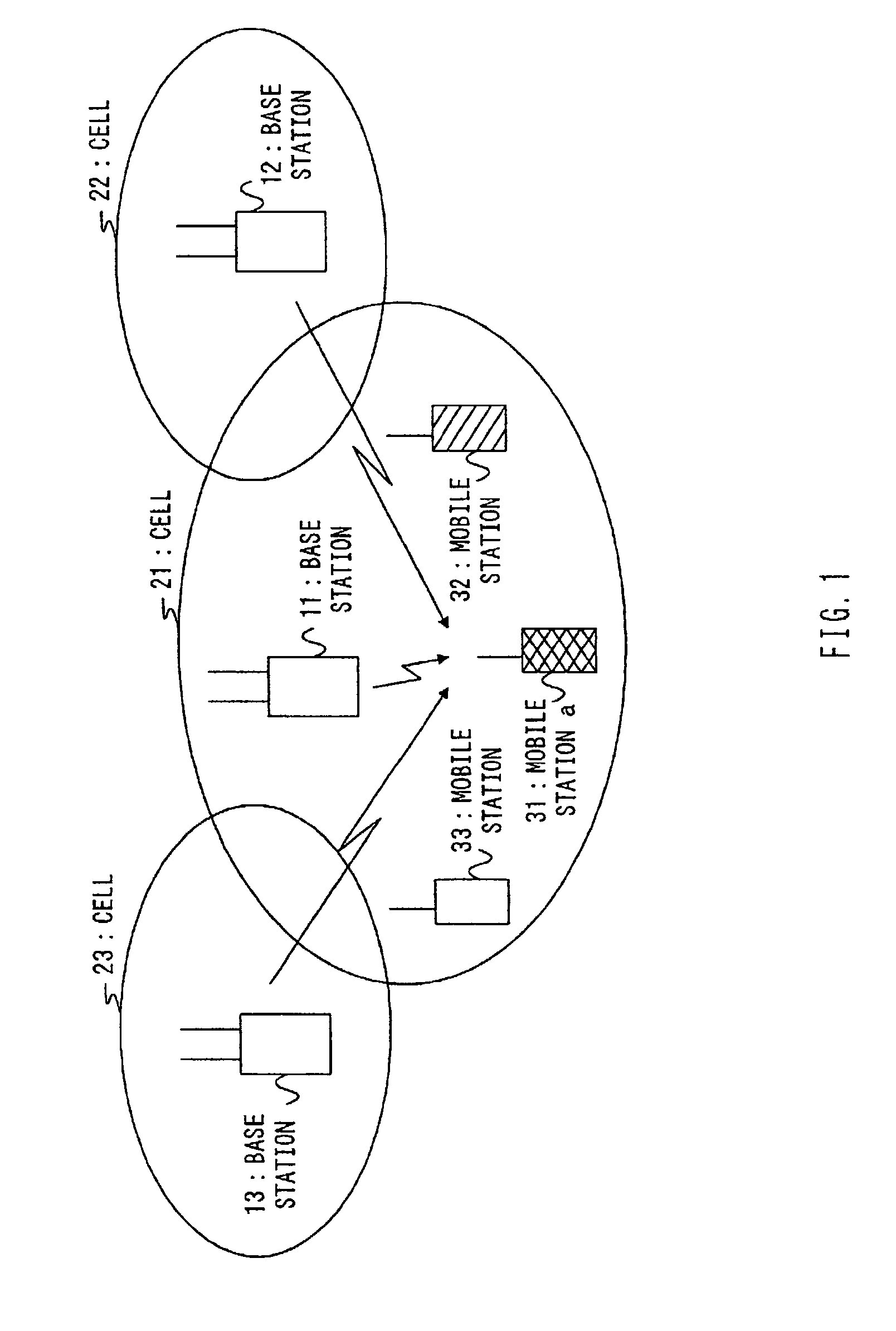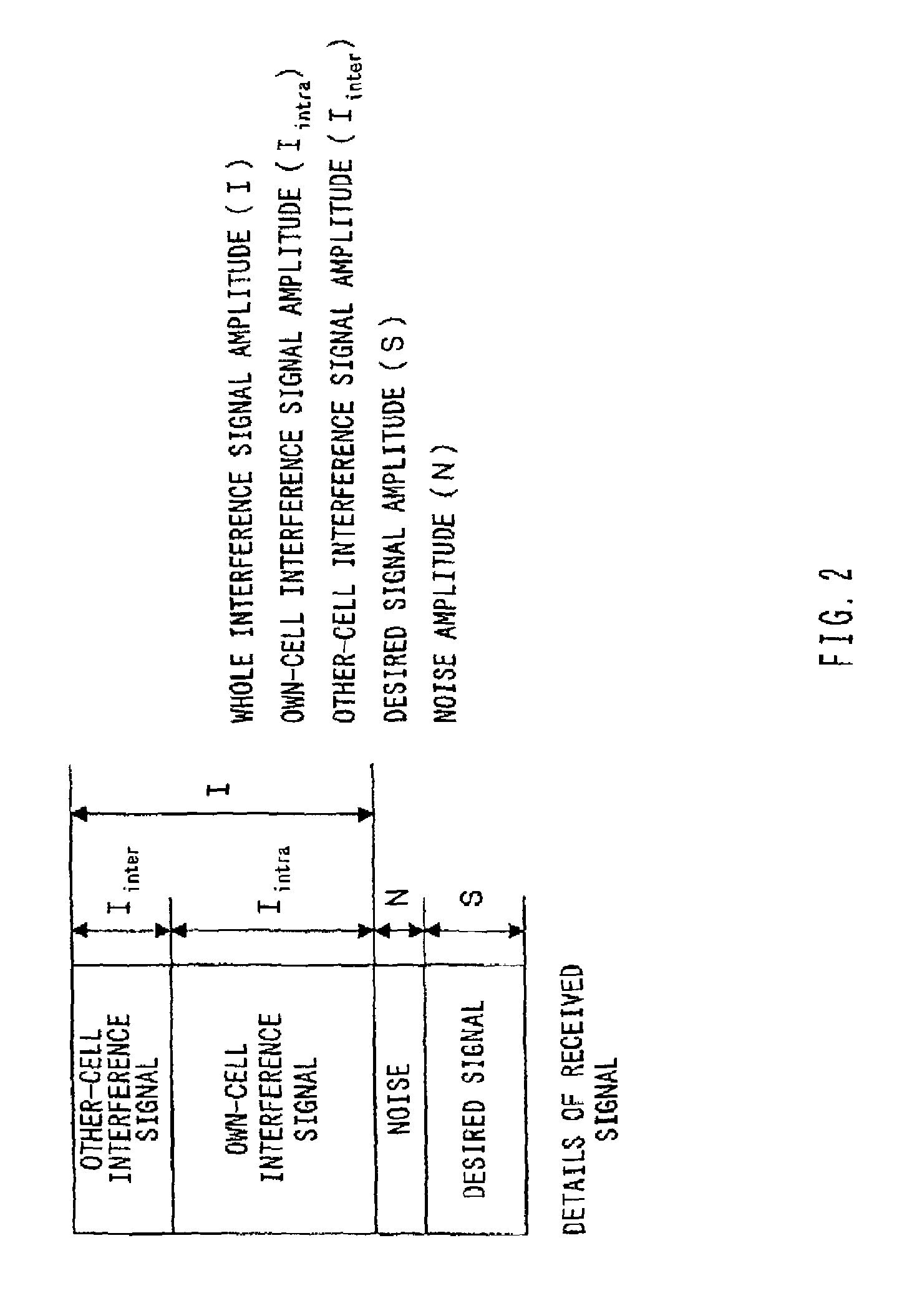Receiving apparatus and gain control method
a technology of receiving apparatus and gain control, which is applied in the direction of power management, transmission monitoring, multiplex communication, etc., can solve the problems of deterioration in the above interference suppression effect, and deterioration in the interference suppression effect, so as to prevent deterioration in the received quality and good accuracy
- Summary
- Abstract
- Description
- Claims
- Application Information
AI Technical Summary
Benefits of technology
Problems solved by technology
Method used
Image
Examples
embodiment 1
[0040]FIG. 5 is a block diagram showing a configuration of a receiving apparatus according to an embodiment 1 of the present invention.
[0041]In the receiving apparatus of FIG. 5, a receiving RF section 102 amplifies a radio frequency signal received through an antenna 101, and performs frequency conversion of the above amplified signal into a baseband one. An AGC section 103 controls the gain of the above baseband signal output from the above receiving RF section 102 according to a gain coefficient input from a digital-to-analog conversion section 114 which will be described later. An analog-to-digital conversion section 104 converts the output signal of the above AGC section 103 into a digital signal.
[0042]A code storage section 105 stores primary codes allocated to the own cell. A code generation section 106 outputs the primary codes stored in the above code storage section 105 at a predetermined timing.
[0043]A despreading section 107 measures a delay profile by correlation betwee...
embodiment 2
[0056]FIG. 8 is a block diagram showing a configuration of a receiving apparatus according to an embodiment 2 of the present invention. However, in the receiving apparatus shown in FIG. 8, components common to those of the receiving apparatus shown in FIG. 5 are denoted by the same reference numbers as those in FIG. 5, and detailed description will be eliminated.
[0057]Comparing with the receiving apparatus shown in FIG. 5, the receiving apparatus shown in FIG. 8 has a configuration comprising a pair of the following components: antennas 101; receiving RF sections 102; AGC sections 103; analog-to-digital conversion sections 104; code storage sections 105; code generation sections 106; despreading sections 107; interference cancellers 108; user judgment sections 111; and electric-field-strength calculation sections 112, and further including a combination section 301; and a selection section 302.
[0058]The above combination section 301 combines two outputs from the interference cancell...
embodiment 3
[0062]In a conventional receiving apparatus and gain control method, AGC with the same gain coefficient has been performed at handover from a base station under communication (hereinafter, called as “a first base station”) and to a base station newly to be communicated (hereinafter, called “a second base station”). In this case, there is caused insufficient bit-accuracy in the bit accuracy of the desired signal S and the interference signal Iintra of the own cell, when there is a difference in the number of users under communication between the first base station and the above second base station, and, conversely, the received quality is deteriorated, as the clipping is performed even for these signals. The present embodiment 3 will be described for a case where the above problems are solved, and deterioration in the received quality at handover is prevented.
[0063]FIG. 9 is a block diagram showing a configuration of a receiving apparatus according to the embodiment 3 of the present ...
PUM
 Login to View More
Login to View More Abstract
Description
Claims
Application Information
 Login to View More
Login to View More - R&D
- Intellectual Property
- Life Sciences
- Materials
- Tech Scout
- Unparalleled Data Quality
- Higher Quality Content
- 60% Fewer Hallucinations
Browse by: Latest US Patents, China's latest patents, Technical Efficacy Thesaurus, Application Domain, Technology Topic, Popular Technical Reports.
© 2025 PatSnap. All rights reserved.Legal|Privacy policy|Modern Slavery Act Transparency Statement|Sitemap|About US| Contact US: help@patsnap.com



